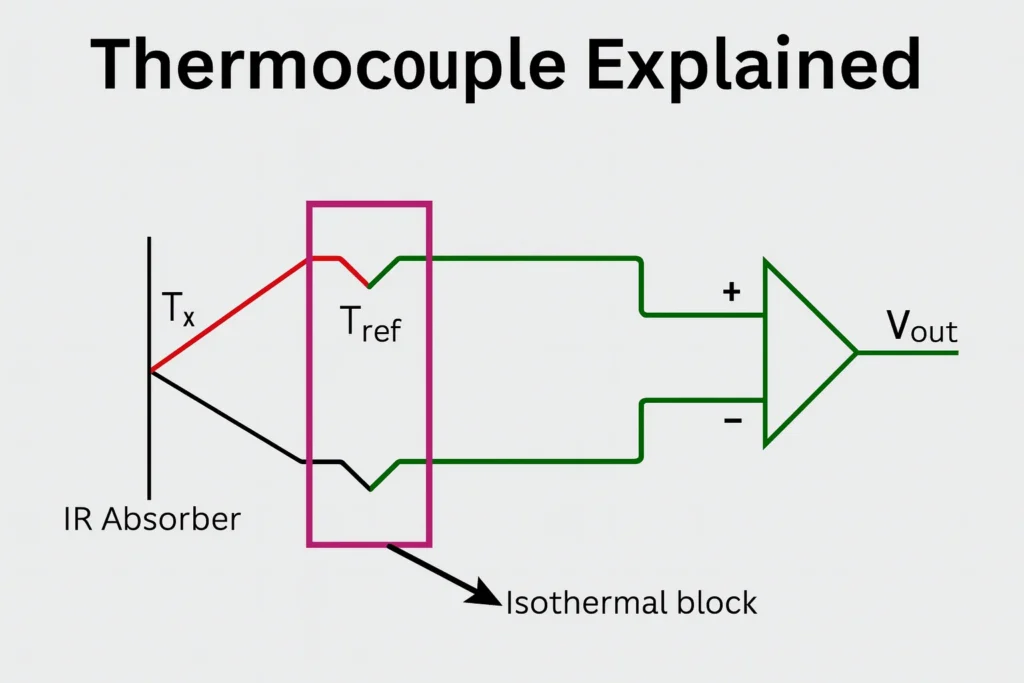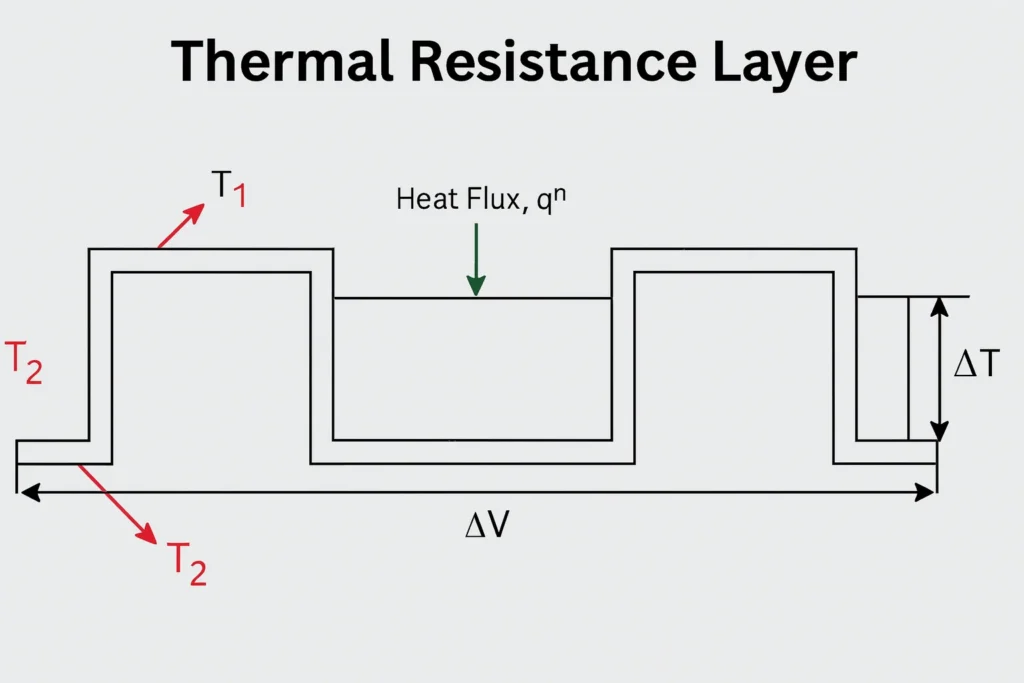What is a Thermopile?
A thermopile is a device designed to convert thermal energy into electrical energy. It works based on the principle of the thermoelectric effect, where thermocouples made of dissimilar metals are exposed to a temperature difference. These thermocouples are usually connected in series or parallel to form a pile, which helps in generating voltage. When heat is applied, the change in temperature between the metals produces an electrical charge, enabling the thermopile to work efficiently.

Operation of a Thermopile
A thermopile works by using multiple thermocouples that are connected in series and parallel, with their junctions arranged between two isothermal regions. Each thermocouple generates a small voltage based on the temperature difference between its hot and cold junctions. This temperature differential results in a voltage that can be measured by controlled devices, usually in millivolts.
When there is a temperature gradient across the thermopile, the voltages from the individual thermocouples sum up to create a larger output. The resulting output voltage is directly proportional to the temperature difference between the junctions. This process does not depend on the absolute temperature but instead on the local temperature difference, making it ideal for non-contact applications.
In passive operation, the thermopile generates current from the temperature difference without needing any external power. This is why they are used in energy harvesting, process monitoring, and temperature measurements. A common application is in the FluxTeq PHFS-01, which uses the thermopile to measure heat flux based on the induced voltage from the temperature gradient. You can also read about inductive sensor.

Types of Thermopile Sensors
There are various types of sensors, each designed with different materials, configurations, and thermocouples. These sensors are known for their non-contact measurement of temperature and infrared radiation from an object or source. They are often equipped with an infrared absorber and a filter to improve accuracy and performance.
These sensors offer several advantages, such as higher accuracy, faster response time, wider range, and lower maintenance compared to contact-based sensors. The specific design and configuration can vary depending on the intended use and the measurement principles of the sensor. Common types of these sensors cater to different needs based on these factors. You can also read about capacitive sensor.
Single-element Thermopile Sensor
A single-element thermopile sensor consists of a hot junction and a cold junction that measure the temperature difference between them. The hot junction is connected to an infrared absorber, often a micro-machined membrane on a silicon chip. This sensor is suitable for measuring low to medium levels of infrared radiation, where the response is proportional to the amount of radiation absorbed by the membrane.
The cold junction is typically linked to a heat sink or reference temperature to maintain stability. This setup enables the sensor to provide a fast response time when measuring temperature changes. As the infrared radiation hits the membrane, the sensor quickly calculates the difference in temperature, allowing it to measure with high efficiency.
Multi-element Thermopile Sensor
A multi-element thermopile sensor has several thermopiles connected in series. Each thermopile features its own hot junctions and cold junctions, all linked to a common infrared absorber and heat sink. The sensor measures the sum of the voltage outputs from each thermopile, which is proportional to the total infrared radiation absorbed by the membrane.
This type of sensor is suitable for measuring higher levels of infrared radiation and offers high sensitivity. The sensor’s design allows it to capture more radiation and provide accurate readings, making it ideal for applications requiring precise measurements of high infrared energy.
Array Thermopile Sensor
An array thermopile sensor has multiple thermopiles arranged in rows and columns on a substrate. Each thermopile has its own hot junctions and cold junctions, connected to individual infrared absorbers and heat sinks. The sensor measures the voltage output from each thermopile, which is proportional to the local infrared radiation absorbed by each absorber.
This sensor can create a two-dimensional image of the radiation distribution of an object, helping to detect the position, shape, and movement of the object. The arrangement of them in the array allows for accurate measurements of infrared radiation across a broad area, providing a detailed view of the infrared environment.
Pyroelectric Thermopile Sensor
A pyroelectric thermopile sensor combines a pyroelectric material with a thermopile. The pyroelectric material generates an electric charge when it is either heated or cooled. This material is attached to the hot junctions of the thermopile, while the cold junctions are connected to a heat sink, allowing the sensor to respond to rapid changes in infrared radiation.
The sensor measures both the voltage output from the them and the charge output from the pyroelectric material. This charge output is proportional to the rate of change in infrared radiation that the material absorbs, making it ideal for detecting both static and dynamic temperatures. It can effectively measure and detect temperature shifts in response to changing radiation levels.
Applications of Thermopiles
Infrared Thermometers and Medical Use
They are widely used in infrared thermometers to measure body temperature. Medical professionals rely on them for quick and accurate readings. The output from it helps detect even slight changes in temperature.
Energy Generation
They can also generate electrical energy from sources like solar wind, radiation, and radioactive materials. This process is related to the Peltier effect, where heat is transferred between the hot junctions and cold junctions to create electricity.
Heat Flux Sensors and Controls
They are used in heat flux sensors to measure heat levels accurately. These sensors are used in gas burner safety controls and other applications where temperature measurements are critical to system safety and performance.
Power Meters
In these sensors, laser power and optical power are converted into heat, allowing power meters to measure the temperature increase caused by laser radiation or infrared radiation. The signal level of the output is proportional to the energy absorbed.
Conclusion
They are versatile devices used in many applications. They are found in infrared thermometers for medical professionals, energy generation, and heat flux sensors. These sensors convert thermal energy into electrical energy efficiently. They work well for both static and dynamic temperature measurements.
There are different types of sensors, like single-element and multi-element ones. Each has its own advantages based on the application’s needs. They can detect infrared radiation and generate electric charge. They provide valuable solutions in industries that need precise and reliable temperature measurements.
